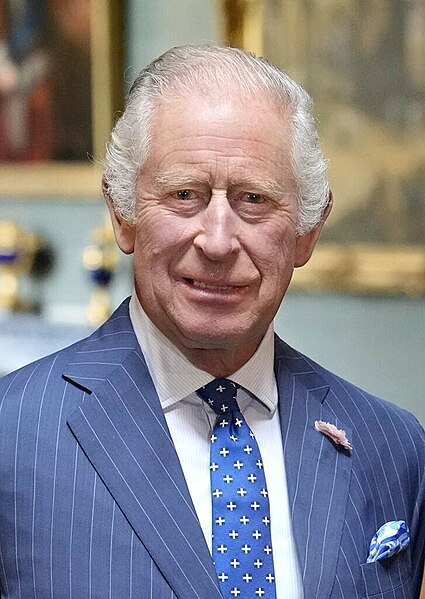The Crown broadly represents the state in all its aspects within the jurisprudence of the Commonwealth realms and their subdivisions. The term can be used to refer to the office of the monarch or the monarchy as institutions; to the rule of law; or to the functions of executive, legislative, and judicial governance and the civil service.
Rideau Hall in Ottawa, Ontario, held in perpetuity by the Canadian monarch, presently Charles III
Balmoral Castle in Aberdeenshire, Scotland, the privately owned property of Charles III
King Charles III (wearing the Imperial State Crown), the living embodiment of the state/crown in each of the Commonwealth realms
The mace of the Parliament of Queensland, symbolising the power of the Australian Crown-in-Parliament
A Commonwealth realm is a sovereign state that has Charles III as its monarch and ceremonial head of state. All the realms are equal with and independent of the others, though one person, resident in the United Kingdom, acts as monarch of each. The phrase Commonwealth realm is an informal description not used in any law.
Charles III, the reigning sovereign of each of the Commonwealth realms since 2022
High Commissioner of Belize to the UK meets with the British Minister of State for Foreign and Commonwealth Affairs. High Commissioners act as liaisons between the governments of the Commonwealth realms.
Prince George, second in the line of succession
King George VI, with Queen Elizabeth, grants royal assent to bills in the Senate of Canada, May 1939








